Imagining possibilities for Sheridan Hollow
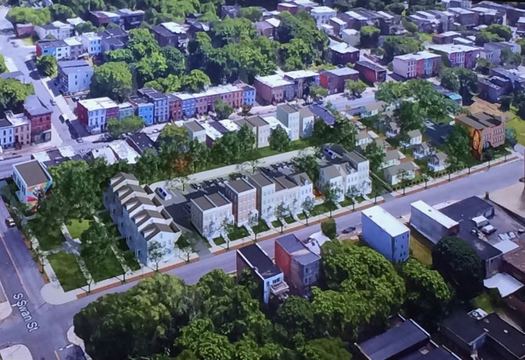
Sheridan Hollow is one of Albany's oldest neighborhoods. And throughout much of that history, the neighborhood has repeatedly been overlooked, bypassed, or excluded. It's gotten the short end of the stick many times.
But in recent years the neighborhood tucked into the center of Albany has added new, affordable housing and mixed-use space, and it appears to be gaining some positive momentum.
How to keep that going was one of the central questions in a recent week-long intensive look at the neighborhood, an extension of the city's Rezone Albany initiative. Consultants were in town studying the neighborhood, talking with people, and imagining new possibilities -- which they presented at a public meeting last Thursday.
Here's a look at what they came up with. (Are there renderings? You know there are renderings.)
Renderings
There are a bunch of renderings at the top in large format that were part of the slide presentation -- click or scroll all the way up.
And here are some of the highlights...
Slope park

One of the defining characteristics of Sheridan Hollow is that, as the name implies, it's in a valley. (The Fox Creek once ran through it.) And the south side of this valley -- the one that runs along the area around the Capitol -- is very steep.
There are steps that climb this slope. But they ascend 86 feet in elevation, roughly equivalent to climbing the staircase in an 8-story building. It's a workout, and effectively a barrier between Sheridan Hollow and the Capitol area.
Confronted with this topological challenge, the team from Dover, Kohl & Partners -- the consultancy that's been heading up these neighborhood-specific reviews -- decided to lean into it. They reimagined the slope not just with new, more attractive stairs, but also as a whole linear park with trails that would switch back and forth up the hill at a grade consistent with accessibility guidelines for people with disabilities.
"Not just finding a way to deal with it, but to make it an asset -- that's a pretty great outcome of this," said Chris Spencer, Albany city planning director, of the idea.
One challenge in converting the slope into a park is doing it in a way so that people feel safe using it, especially if it's to be a frequently-traveled corridor between neighborhoods.
"A lot of that is lighting," Spencer said, adding that underbrush could be cleared out and trees trimmed up to create sight lines through the park. "But creating safety in any place is, really, getting a lot of people using it. "
Spencer said the potential cost of remaking the slope wasn't worked out. And while it's not necessarily a big construction project, it's going to cost a chunk of money. (For some context, the price tag on the recent path upgrades at Corning Riverfront Park was $5 million.)
But treating it as a park -- instead of just a project to renovate a few staircases -- should open up opportunities for partnerships and funding.
Dover Kohl's Jason King, who's led this series of neighborhood-specific planning sessions, was optimistic about the chances of making the park happen.
"It's state-owned land. We're talking about creating a park in a spot that's park-like already," he said. "And that alone, bringing foot traffic, is a quick connection to make. It's not building a highway or an exit or a subway stop. And the city seems excited about the idea of creating that connection."
The underpass
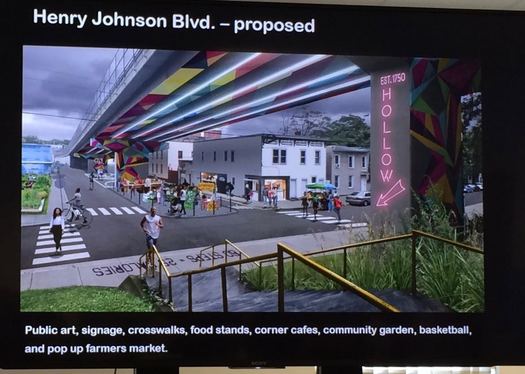
One of the ideas to get the strongest positive reaction from the crowd during the presentation was a proposal to makeover the chunk of Sheridan Hollow that sits underneath the elevated portion of Henry Johnson Boulevard. The Dover Kohl team proposed new lighting, stairs, multi-use space, and art. The idea prompted audible cheers and encouragement from people in the crowd.
"I love [the idea] for underneath the Henry Johnson bridge," said Common Council member Ron Bailey, who represents Sheridan Hollow. "I live in that area, so I would love to see it lit up. A lot of times we get people who do illegal dumping underneath that bridge. So that would take care of that problem, lighting it up under there."
Like the slope park, this idea potentially runs with a feature of the neighborhood rather than trying to push back against it -- specifically, it would try to take advantage of the fact the spot already has a distinct feel and sense of place.
"Even when you go down there right now -- it's dark, vacant -- but you can feel how it's unique," said Chris Spencer. "You got all these different streets coming together, the ridge over top, and you got all these different opportunities there. So even now in its raw state you can feel that that place could be something kind of exciting."
New housing options

Sheridan Hollow is literally steps away from downtown Albany proper and the area around the state Capitol. It's right in the heart of the city. And yet it also has a relatively large amount of vacant land.
That space offers room for some potentially interesting new housing development because in many cases constructing new ends being cheaper than renovating old. In fact, the neighborhood's already seen that happen: Habitat for Humanity Capital District and Housing Visions were able to build a large chunk of new, affordable housing and mixed-use square footage -- a new neighborhood center --
at Sheridan and Dove. (Habitat has also been rehabbing old buildings in the neighborhood, working the numbers to get costs down for such projects.)
But there's still a lot of open land remaining for in-fill development. And the Dover Kohl team proposed a few different block configurations for new construction. Some of the formats are extensions of the row house-type development that's common in the historic urban sections of the city.
There was also a proposal to introduce something new: small (don't call them tiny) homes. And to integrate the 500-square-foot (or so) homes into the existing streetscape, the team proposed clustering them as courts of cottages.
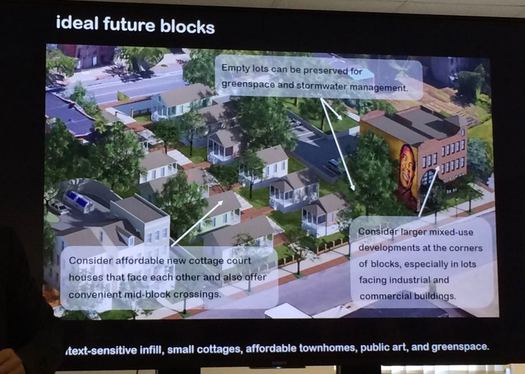
"It's a little controversial," said Jason King. "The idea of introducing a new kind of housing type into a historic district -- one of the oldest neighborhoods -- is scary. However, it would increase home ownership. And we presented how it could be done well. So we don't like the idea of historic, three-story town homes from the 1880s across the street from courtyard buildings. What we're trying to do put them in the middle of the block so that way like is always facing like. So small homes are facing small homes. Because it is a historic district and we want to maintain the integrity as much as possible."
The thinking behind the introduction of the small home format is to provide affordable homeownership opportunities for people who might not otherwise be able to buy a home -- something in, say, the $50,000 range.
"I could see people buying these homes," said Ron Bailey. "A lot of people want their own home. It's affordable. And a lot of people these days have to think about their kids. You buy a home now, later on down the road you can turn that home over to your child when you move away or whatever."
As Bailey alludes to, giving people with moderate or low incomes a foothold as homeowners also opens another avenue for families to build wealth. One of the lasting effects of discriminatory policies such as redlining is that African American families kept out of the housing market lost a key way of accumulating generational wealth. It's one of the reasons there's such a huge gap in wealth between white households and African American households. So expanding housing options could have wider ripple effects.
Chris Spencer, the city planning director, said the zoning for Sheridan Hollow probably wouldn't allow the types of small homes proposed here. But he said the city is eyeing potential revisions -- not just for this specific issue, but for mixed uses in Sheridan Hollow as a whole -- as part of the six-month review for Rezone Albany.
"We've done a lot of things where you look at the street fabric and you're kind of doing the same thing, repeating it," he said. "But in the case of Sheridan Hollow, where there are stormwater issues, parking issues, sometimes you're just repeating the problems. So having that combination, that sort of menu of things you could do with different lots is great."
Potential, potential, potential... to what end?
Sheridan Hollow has gotten the short end of stick time and time again throughout its history. But it really does appear to be gaining positive momentum over the last few years.
The new attention could potentially draw new developers. And it's very possible some of the more upper-end development that's been happening next door in downtown could start spreading into the hollow.
That could be a good thing. There's research that points to mixed-income neighborhoods being engines of opportunity for a range of people. And officials -- with the city, with the consultants, with housing orgs -- seem to be in agreement that bringing market-rate development to Sheridan Hollow should be part of the goal.
"It's got a long way to go before this area has priced out working class people," said Dover Kohl's Jason King when we asked about the possibility of development displacing Sheridan Hollow's longtime residents. "It's got a lot of gentrification -- to use that term -- before it's unattainable. And it seems like people in the community -- owners and renters -- want to see improvement. This isn't Bay Area San Francisco, it isn't midtown Denver. They have bigger fears than gentrification. They want to see improvement. So I think the fear that the Hollow will be unaffordable to all, I think, is a long way away."
But it's worth keeping the affordability issue squarely in focus. Because it looks like something special -- unique, even -- is sprouting in Sheridan Hollow: new-construction, affordable, attractive, close, walkable housing in a place, a community, that deserves a break.
Earlier
+ Imagining possible futures for the neighborhood around UAlbany's downtown campus
+ A few versions of the South End's potential future
+ Thinking about the direction of Central Ave
+ What sort of place should Albany's Warehouse District be?
Hi there. Comments have been closed for this item. Still have something to say? Contact us.
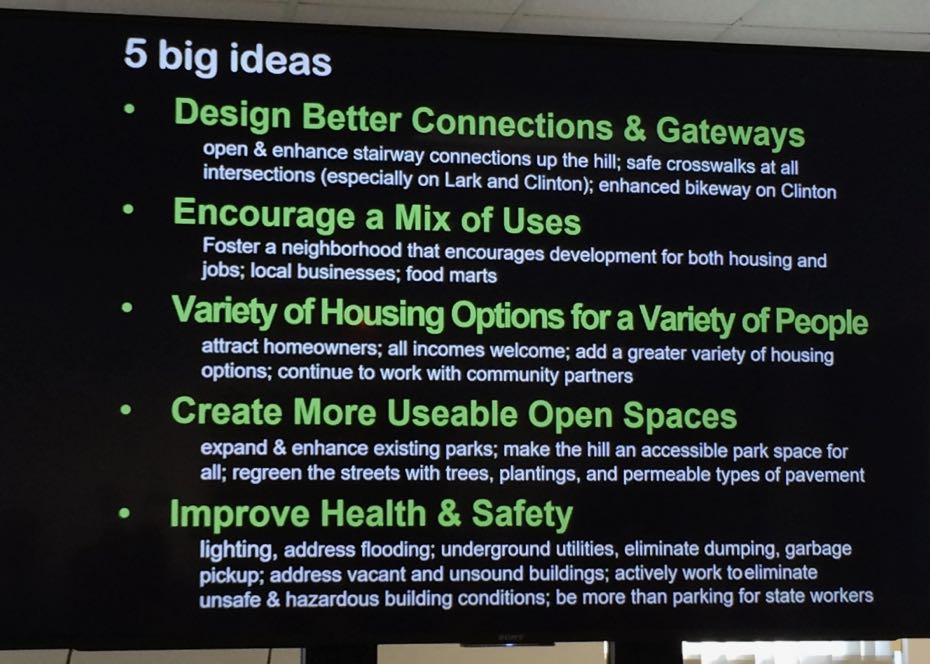

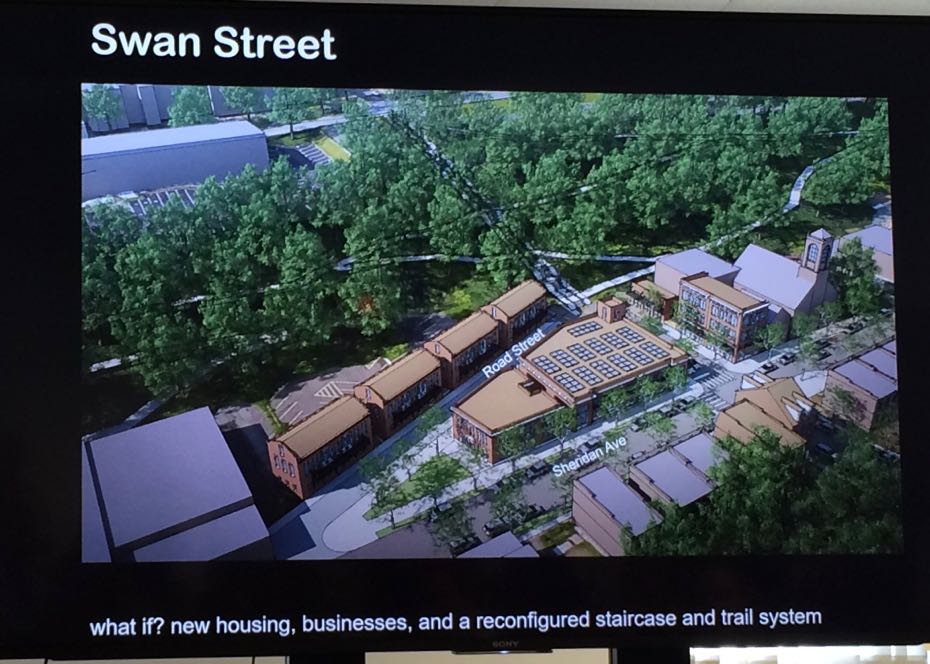
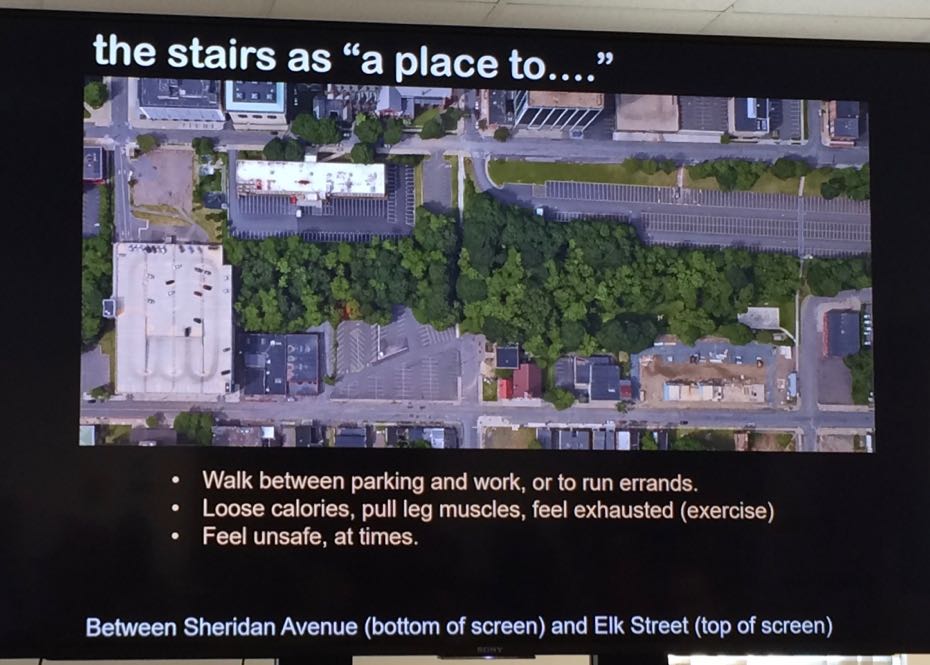
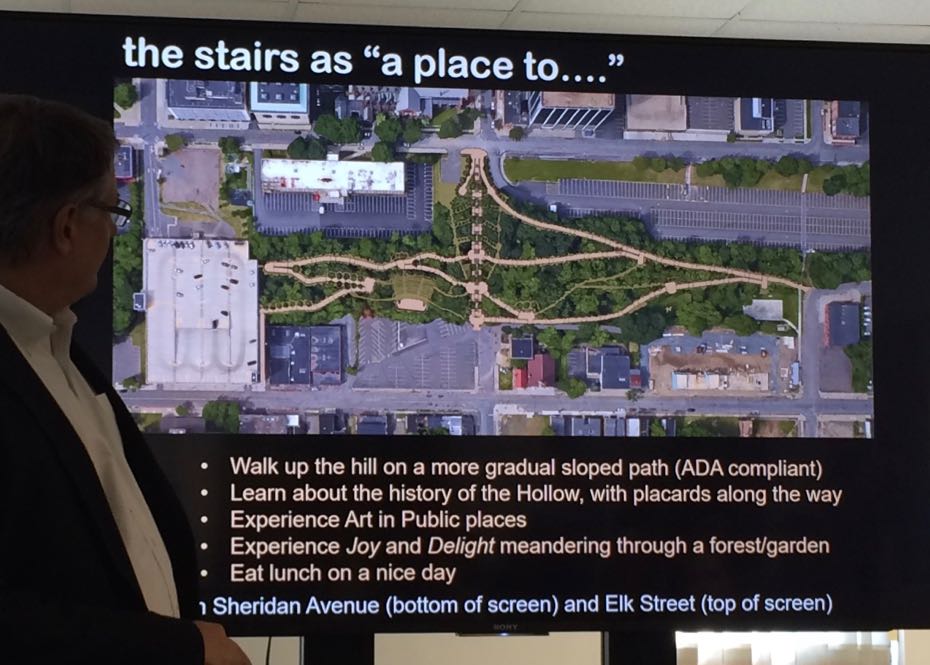

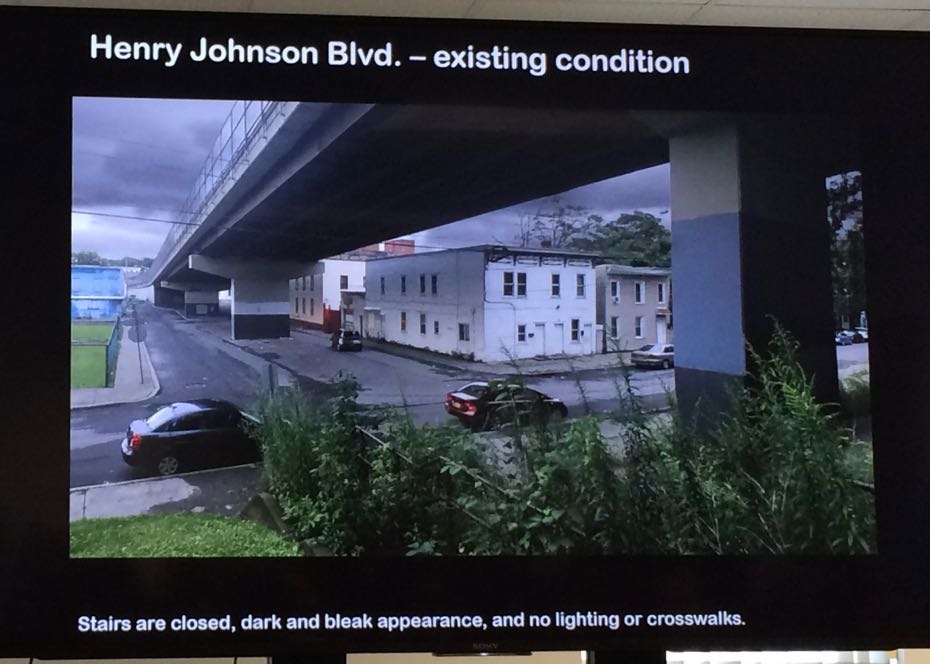
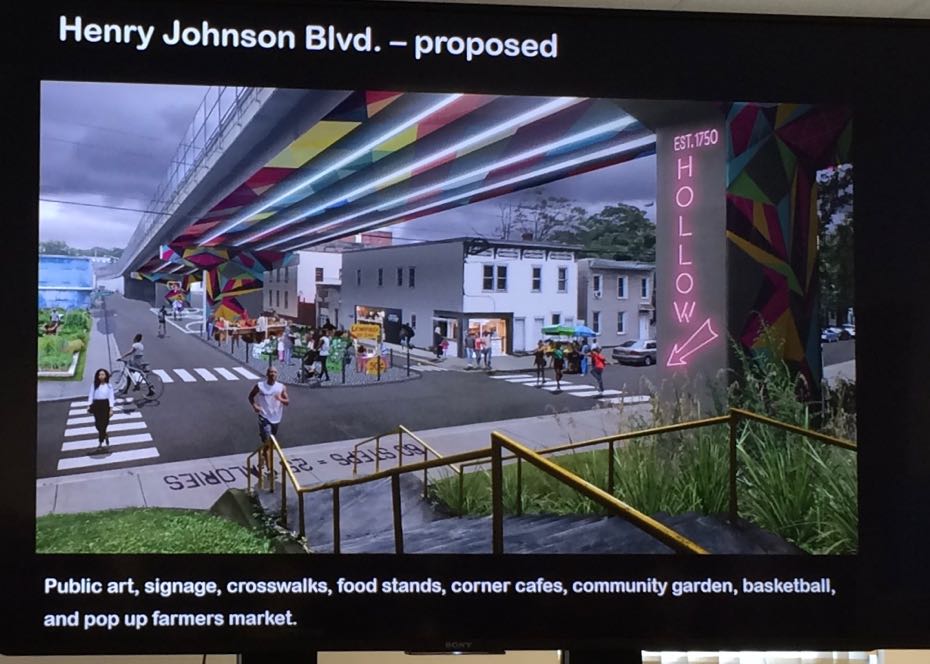
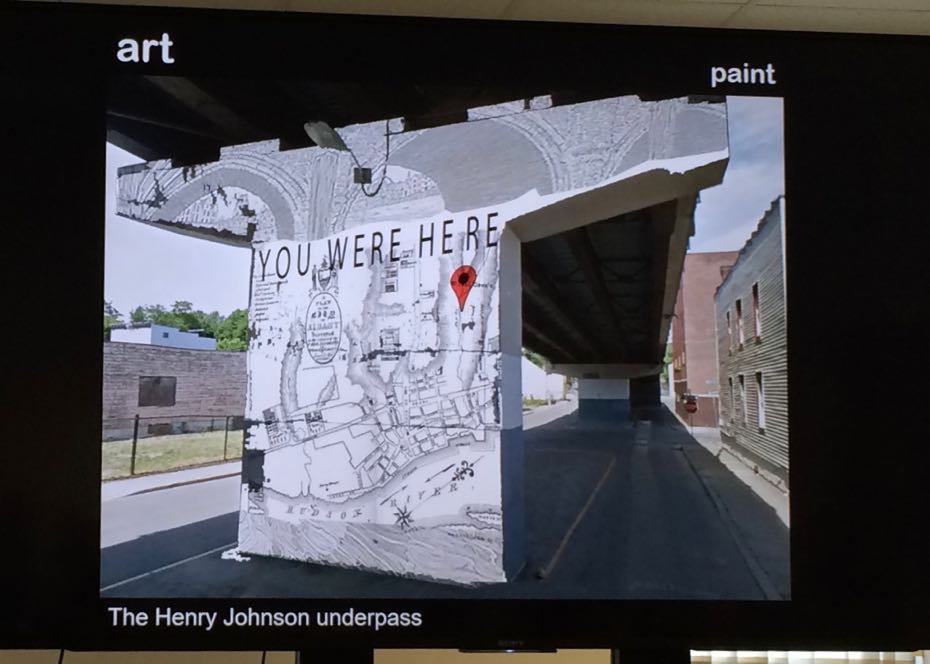
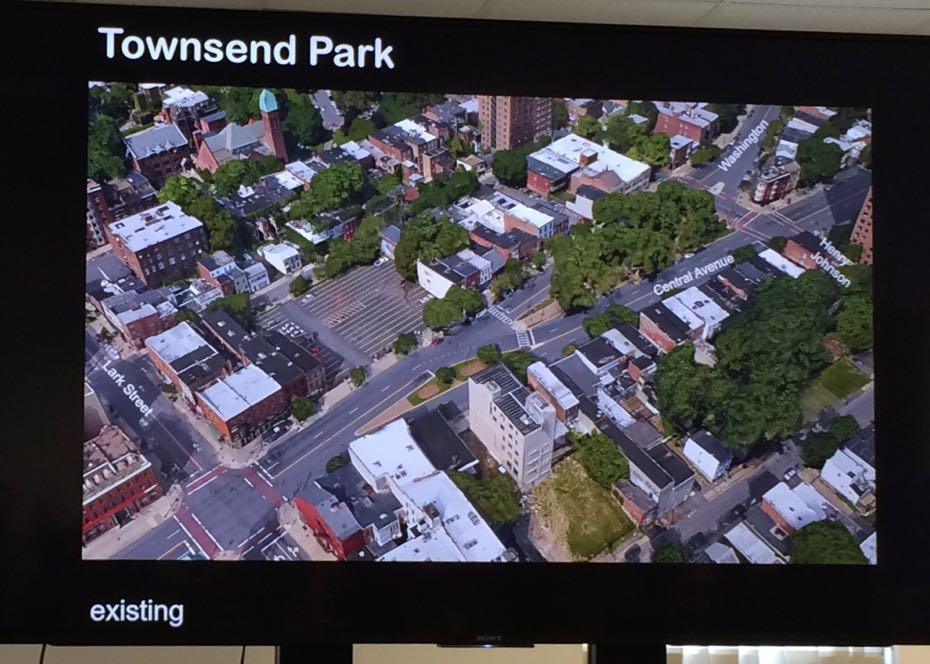
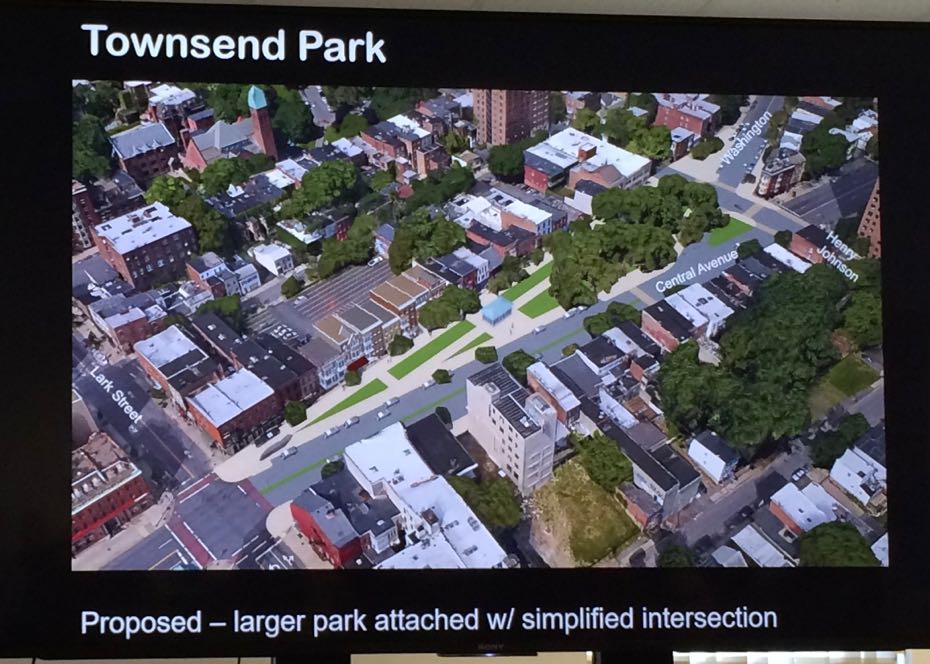

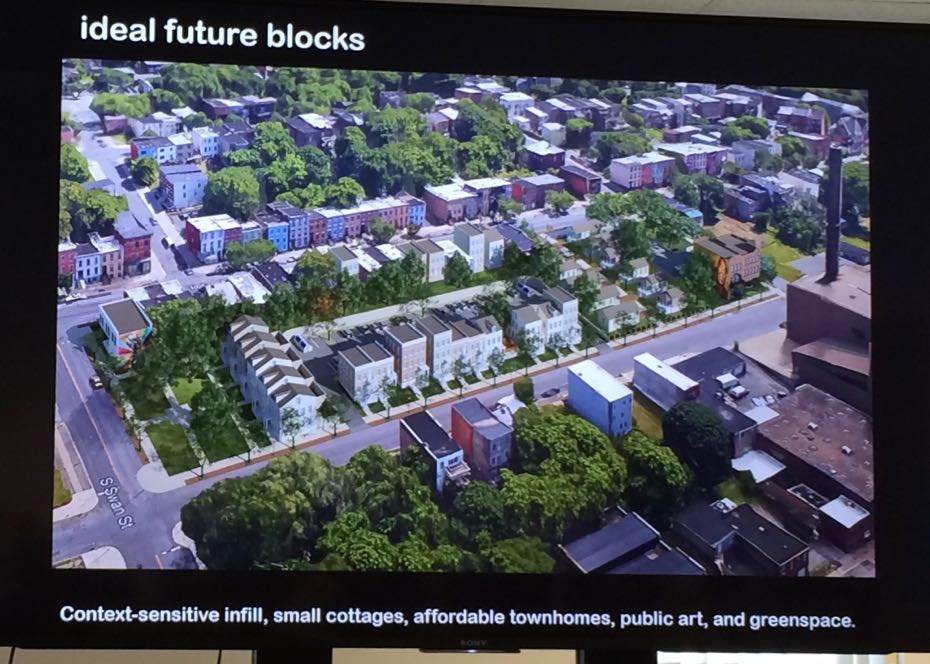
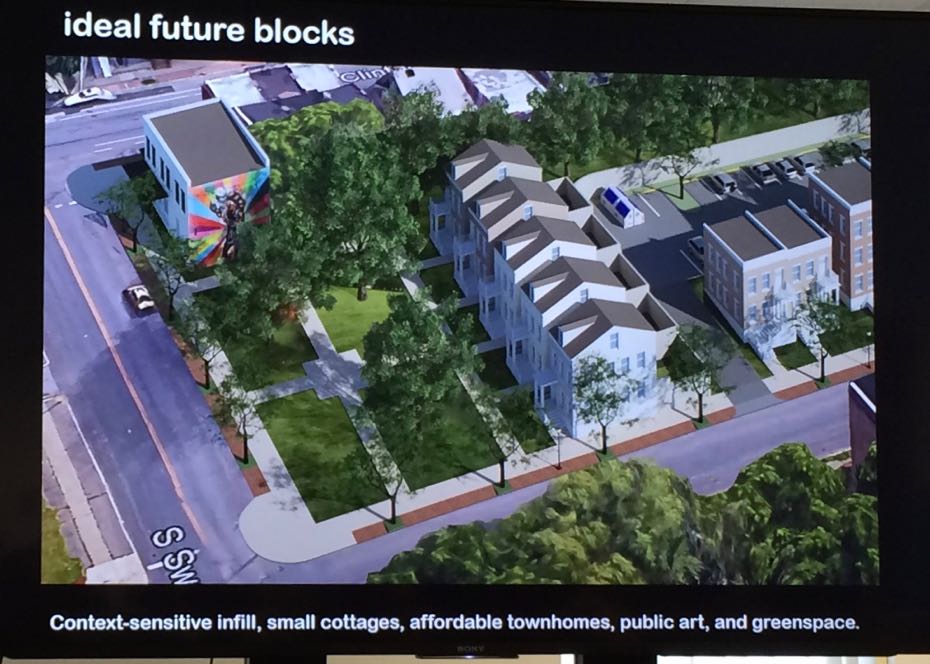

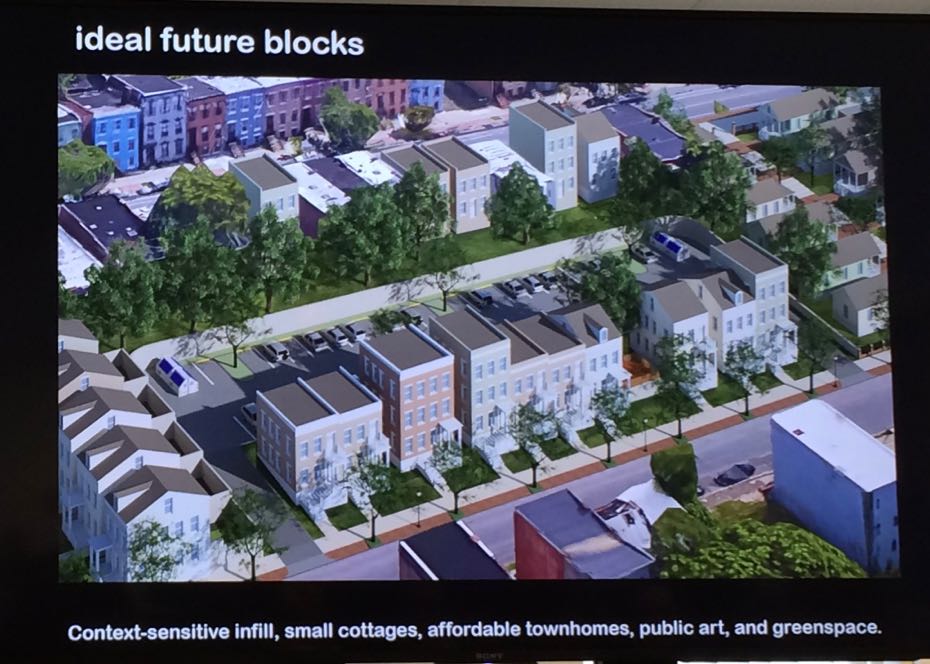
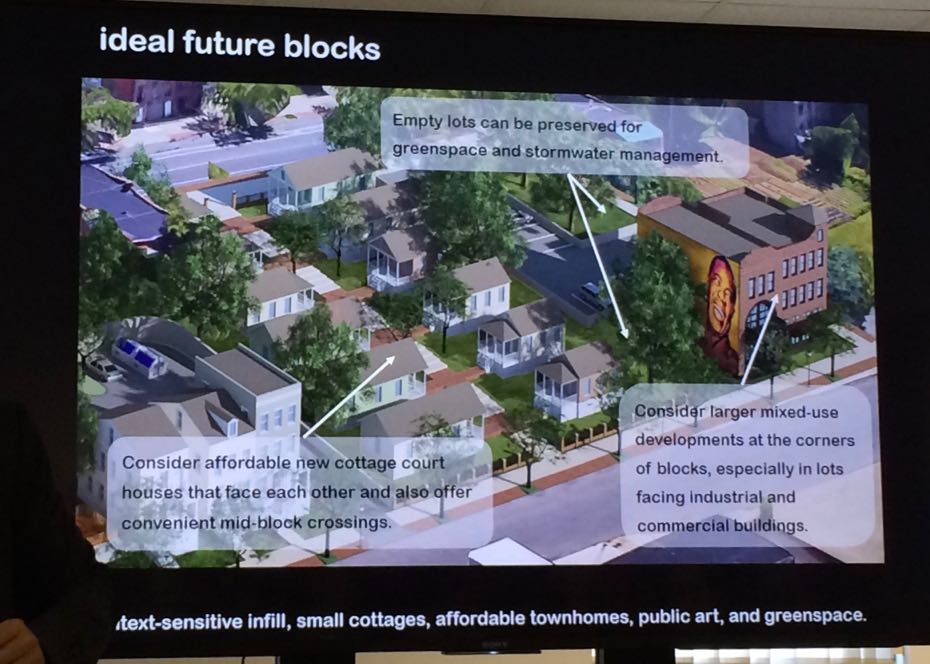
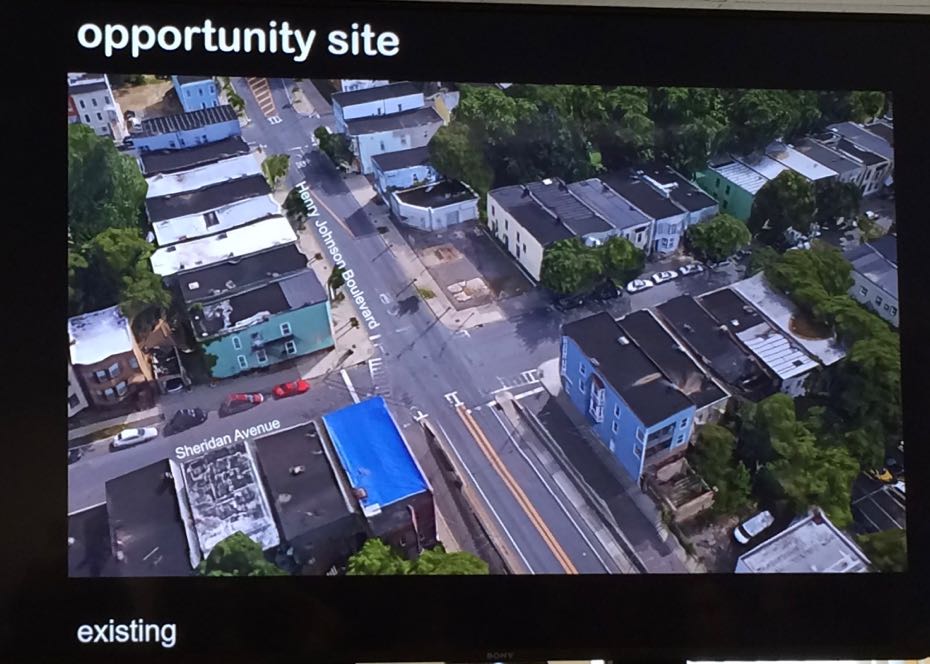
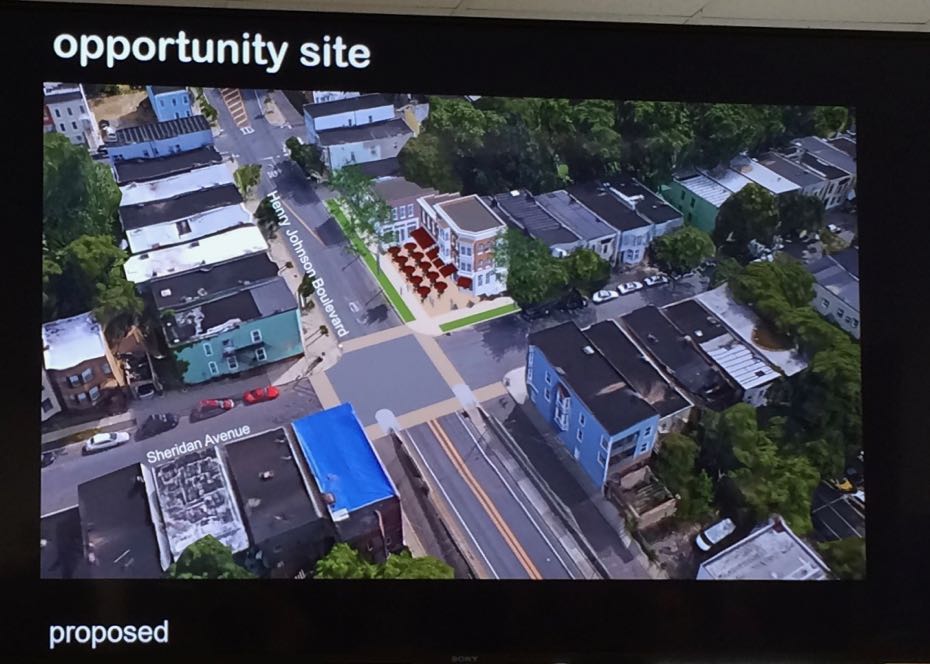


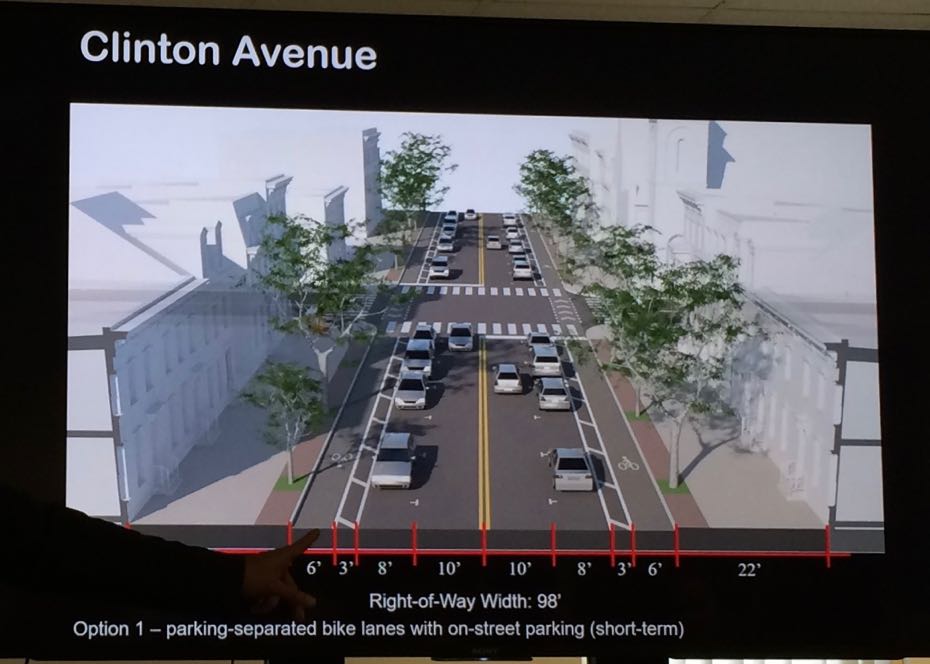
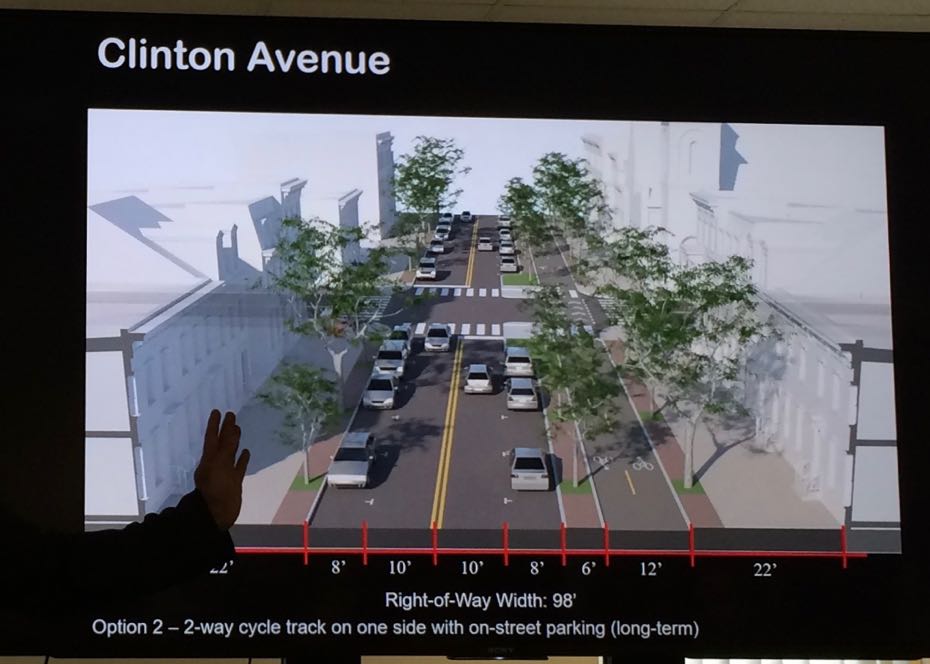

Comments
WOW.
... said daleyplanit on Aug 17, 2017 at 9:23 AM | link
You know what would increase home ownership? If the City stopped "emergency" demoing buildings left and right and instead actually invested that money into stabilization and rehabilitation efforts. No one wants to buy a house in a neighborhood filled with vacant properties that the City allows criminally negligent owners to ignore. But they also don't want to live in a neighborhood where they're the only house on the block. We will not fix Albany through demolition and new builds that are perfectly suited and encourage gentrification. We will fix Albany by investing in the quality building stock we already have and to help residents who want to stay in their homes and neighborhoods but are being systematically forced out.
... said albs on Aug 17, 2017 at 10:06 AM | link
I so love reading fiction. I'd love to be one of these consultants and get paid to make all sorts of cool renderings and not actually produce anything and walk away after getting everyone so excited. I'm not anotherbof the Albany naysayers it's just that "investing" in these areas is far more than infilling some vacant areas and putting some lights under a bridge. I lived in a medium sized city in Europe for several years and I watched their approach to "rebuilding" their city and the first thing they made sure of was that there were jobs, industry, and safety. After that the people with the jobs needed places to live and to buy things and places to hang out. We always seem in this area to be doing just the opposite. We also continually blame someone else such as absentee landlords for the plight of our inner cities.....there is plenty of blame to spread around to just about everyone in the region from the politicians to the suburbanites to the gang members to absentee landlords to ordinary citizens.....until we are all on the same page fixing a set of stairs isn't going to do much.
... said BS on Aug 17, 2017 at 2:25 PM | link
Dear consultants:
Pulling one's leg muscles is never a good thing.
... said J on Aug 18, 2017 at 10:41 AM | link
How about a market? I'm not talking a SUPER supermarket, but a nice well stocked and attractive place, with maybe a restaurant and some other businesses nearby.
... said Eric Scheirer Stott on Aug 18, 2017 at 6:00 PM | link
I'm concerned how much demolition is going on here. Too many important, historic buildings in Albany are already tagged with an 'X' and the city's approach seems to tear down and ask questions later. Not only are these homes part of the city's history but they are what makes this place unique and they should be treasured- not trashed. In addition, these structures are better built and will last longer than new construction. It is also better for the environment to restore than demolish and build anew. I'm sure the developers that line city politicians' pockets with cash would like to destroy as much as they could. Lastly, will the new 'tiny' homes be designed in approproate local venacular style or will they be cheap, cookie cutter construction which will fare no better than the projects?
... said Peter Lacovara on Aug 19, 2017 at 5:44 AM | link
@Peter Lacovara - you know why those buildings are X'd? Because nobody really wants them. It is oh so great to talk about historical value and character, it is a little bit more difficult to come up with $100k+ per building to make it usable. Upkeep of an old structure is always a pain both in terms of work and money.
If this is actually about historic value, it may be wise not to chase too many rabbits and designate a block or two for preservation, invest in those blocks as historic site and tourist attraction - and have at least something to look at in 50 years.
... said Mike on Aug 20, 2017 at 2:25 PM | link
Peter. You seem to not be living in the same reality as the rest of us. They red x means that no one has been taking care of there properties for years. It's not something that's easily fixed over a weekend with a couple visits to home depot. Since you seem to have the solution why don't you do something about it then? It's just not realistic to be able to save every "historic" building. Someone has to want to invest time and money into it. Perhaps the fact that it hasn't happen is a clue that it's not something that people
... said Winnie_the_pew on Aug 24, 2017 at 8:34 AM | link
The vacant buildings didn't sail down from the clouds in their current condition. They were allowed to rot through disinvestment from the community, and comments like the two above are stellar examples of the shapes that disinvestment takes.
I'm not saying all of them can or should be saved, but unless we fix the underlying issues it doesn't matter whether we repair properties that are there or build new ones. Habitat and the Land Bank have been doing the hard work necessary there, instead of just throwing up their hands and declaring it a lost cause, and I commend them.
... said -B on Aug 24, 2017 at 10:19 AM | link
-B: and what do you think are the underlying issues? I would name jobs and crime... You don't really address those by putting light bulbs in windows...
... said Mike on Aug 24, 2017 at 11:13 AM | link